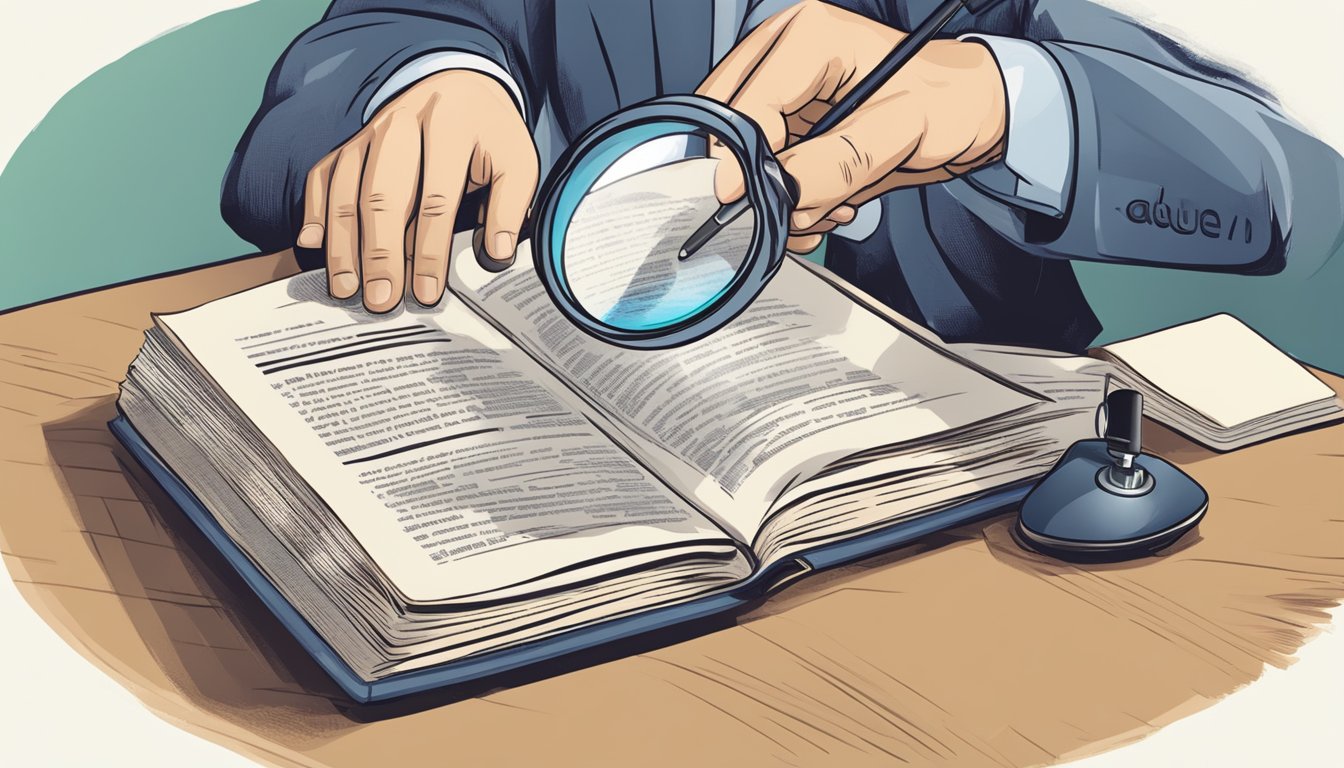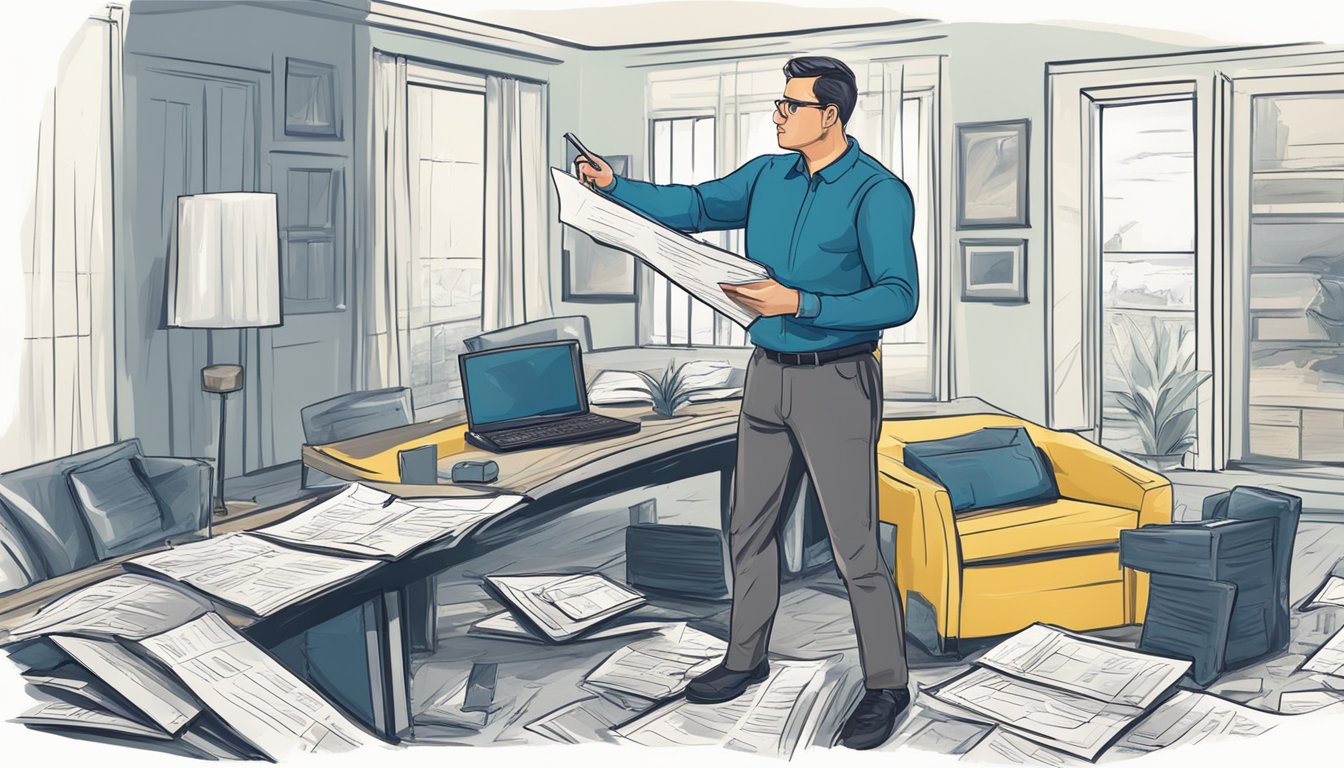Understanding Adjuster Definition

Insurance adjusters play a pivotal role in the insurance industry by evaluating claims to determine appropriate compensation.
Their duties encompass assessment, communication, and ensuring adherence to policy terms.
Definition and Significance
An insurance adjuster is a professional who handles insurance claims.
According to Merriam-Webster, an adjuster is “one that adjusts,” especially “an insurance agent who investigates claims.” Their main task is to evaluate the extent of damage or loss and decide on the company’s liability.
Their role is crucial in ensuring claims are handled fairly.
This can prevent disputes between insurance companies and policyholders over settlement amounts. Accurate evaluations and clear communication help maintain trust and efficiency in the claim process.
Industry Application
Insurance adjusters work on various claims, including property damage, personal injury, and more.
They may be employed by insurance companies or operate as independent agents.
Their work involves visiting accident sites, interviewing witnesses, and reviewing records.
They ensure that settlements are in line with policy terms and industry standards.
Adjusters also help detect and prevent insurance fraud, which is significant for minimizing erroneous payouts.
By conducting thorough investigations and fair assessments, adjusters support the financial health and integrity of insurance companies.
In the context of specific insurance terms, adjusters might evaluate claims based on replacement costs or assess rates related to preferred provider arrangements and exclusions.
Their evaluation helps determine precise compensation, ensuring compliance with relevant insurance policies.
Key Entities in Insurance Adjusting

Insurance Adjusters play a vital role in the claims process.
They work for the insurance company or independently to assess and manage claims.
There are three main types of adjusters:
- Staff Adjusters: Employed by an insurance company.
- Independent Insurance Adjusters: Contractors who work for multiple insurers.
- Public Adjusters: Hired by policyholders to assess claims independently.
Policyholders rely on insurance adjusters to help determine fair settlements.
When a property damage claim is made, adjusters conduct thorough investigations.
This involves interviewing witnesses, inspecting damaged properties, and reviewing relevant documents.
Settlement negotiations are a crucial part of an adjuster’s job.
They determine how much compensation should be paid to the policyholder.
This includes evaluating liability insurance and other aspects of the claim.
Claims adjusters also handle natural disaster claims.
In such cases, they coordinate with various entities to ensure quick recovery for the affected policyholders.
Insurance companies depend on adjusters to manage insurance claims efficiently.
The process includes assessing liability, investigating potential fraud, and negotiating settlements.
Liability assessment is another key responsibility.
The adjuster must evaluate the extent of damages and determine the insurance company’s liability.
This ensures that the claim is legitimate and the settlement is fair.
Public adjusters differ from other adjusters in that they advocate for the policyholder.
They help ensure that claims are maximized and settlements are fair.
Understanding these entities can help you navigate the complex world of insurance adjusting and ensure your claims are handled properly.
The Process Of Claims Adjustment
Understanding the claims adjustment process is crucial for policyholders and adjusters.
It involves key steps like initial reporting, thorough investigation, and final settlement of claims.
This process ensures that both the insurer and the policyholder come to an agreement based on the damages and coverage.
Initial Steps
The claims adjustment process begins when you report a loss to your insurance company.
This could involve property claims, personal injury, or other losses.
The insurer then assigns a claims adjuster to your case.
Depending on the situation, this adjuster could be a staff adjuster, an independent adjuster, or a public adjuster working on a contract basis.
You may need to provide documents and apps to support your claim.
This could include photos, receipts, and police reports, if applicable.
The first step ensures that all necessary details are collected for a thorough assessment later on.
Assessment and Evaluation
Once initial information is gathered, the adjuster will conduct a detailed inspection and evaluation of the reported damages.
This includes visiting the site, interviewing witnesses, and reviewing any other relevant information.
The goal is to determine the extent of the loss and calculate the potential settlement amount.
The adjuster follows specific guidelines and must be licensed to perform these duties.
They might need to coordinate with attorneys, contractors, and other experts to understand the full scope of damages.
Independent adjusters handle multiple cases from various companies and are often involved when specialized knowledge is required.
Resolution and Settlement
After the assessment, the adjuster negotiates a settlement offer with you.
This involves determining a fair amount of money to cover your losses.
You’ll receive a formal demand or offer, which can be accepted or negotiated further.
The final settlement should fairly compensate you for your damages according to your policy’s terms.
This step may involve multiple discussions and adjustments to ensure all parties agree.
Once a settlement is reached, the payment is processed, and the claim is closed.
Continuing education and passing a licensing exam are essential for adjusters to stay updated on insurance policies and maintain their ability to handle claims.
Completing these helps ensure efficient and fair resolutions to all claims they handle.






